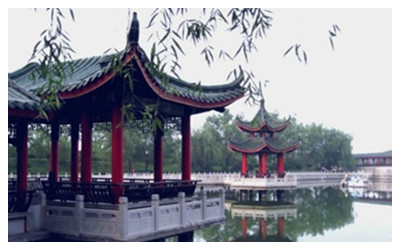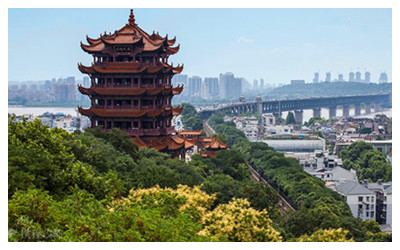Skype: neodalle-travel
Tel: +86 135 7447 2266
E-mail: sales@visitaroundchina.com

 The Chinese pavilion, ( 亭 ting), only one floor building, which means a kiosk, is a common sight in China and one of types Chines artchitecture. The Pavilion is one of the most important roles in Chinese ancient architecture. It’s no exaggeration to say that where there is a garden, there is a pavilion in China. It is built normally either of wood or stone or bamboo with any of several shapes - square, triangle, hexagon, octagon, a five-petal flower, a fan and more. But all pavilions have columns for support without walls. In parks or some scenic places, pavilions are built on slopes to command the panorama or are built by the lakeside to create intriguing images by water.
The Chinese pavilion, ( 亭 ting), only one floor building, which means a kiosk, is a common sight in China and one of types Chines artchitecture. The Pavilion is one of the most important roles in Chinese ancient architecture. It’s no exaggeration to say that where there is a garden, there is a pavilion in China. It is built normally either of wood or stone or bamboo with any of several shapes - square, triangle, hexagon, octagon, a five-petal flower, a fan and more. But all pavilions have columns for support without walls. In parks or some scenic places, pavilions are built on slopes to command the panorama or are built by the lakeside to create intriguing images by water.
Pavilions also serve diverse purposes. The wayside pavilion is called Liangting (cooling kiosk) to provide weary wayfarers with a place for rest. The " stele pavilion" gives a roof to a stone tablet to protect the engraved record of an important event. Pavilions also stand by bridges or over water-wells. In the latter case, dormer windows are built to allow the sun to cast its rays into the well as it has been the belief that water untouched by the sun would cause disease. Occasionally you will find two pavilions standing side by side like twins. In modern times, kiosks have been erected in urban areas as postal stalls, newsstands or photographers' sheds for snapshot services.
Rare among pavilions are those built of bronze. The most celebrated of these is Baoyunge Pavilion of Precious Clouds in Beijing Summer Palace. The entire structure including its roof and columns is cast in bronze. It is popularly known as the "Gold Pavilion” for its elegant and dignified

The Chinese Ge (阁) is similar to the Lou (Tower) in that both are of two or more flooors buildings. The difference between them is that the Ge has a door and windows only on the front side with the other three sides being solid walls. Moreover, Ge is usually enclosed by wooden balustrades or decorated with boards all around. Nanchang Tengwang Pavilion is one of the representive of such a pavilion architecture art.
Such storeyed pavilions were used in ancient times for the storage of important articles and documents. Take Wenyuange as an example, in the Forbidden City of Beijing was in effect the imperial library. Kuiwenge in the Confucius Temple of Qufu, was devoted to the safekeeping of the books and works of painting and calligraphy bestowed by the courts of various dynasties. Some of the Ge, notably those erected in parks, like other pavilions or towers (ting, tai and lou), were used for enjoying the sights.
The name Ge is also used to describe the towers which shelter the colossal statues one finds in some great monasteries. A prominent example is the Guanyinge of Dulesi Temple in Jixian County of Hebei Province. Twenty-three meters high and housing the huge idol of the Goddess of Mercy (Guanyin), it is the oldest exitsing multiple-storeyed structure of its kind in China. Built in the Liao Dynasty (916 - 1125 A. D.), it has withstood twenty-eight earthquakes including three of a devastating nature. When all the houses in the area collapsed, it was the only one that survived the disaster. This example shows how well its wooden frame was structured. Other well-known religious buildings housing Buddhist statues, big or small, include Foxiangge in Beijing's Summer Palace and Zhenwuge in Ronxian of Guangdong Province. All of them, tall, graceful and dignified, can be listed as representative works of classical Chinese architecture.
 Ask Questions ?
Ask Questions ?